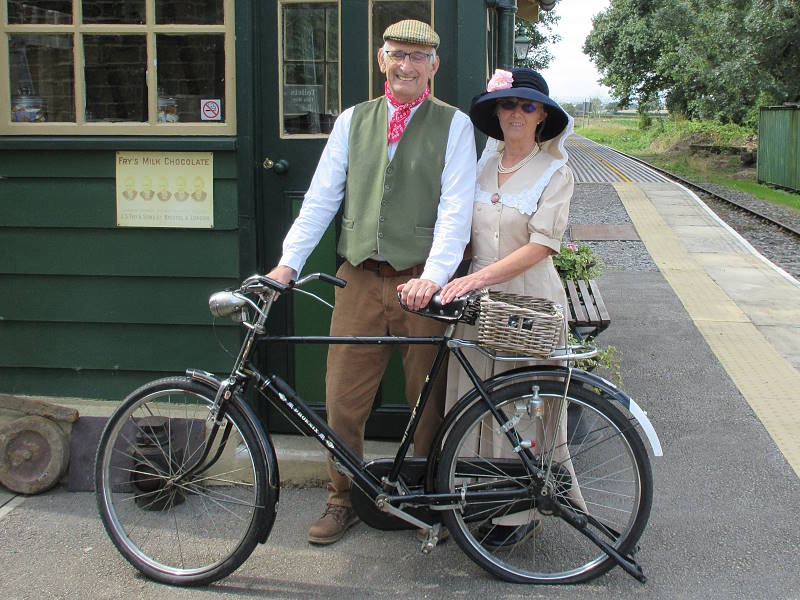If you only visit one ‘thankful village’ – one of the 53 in England and Wales to have all its sons survive WWI – make it Scruton, up in North Yorkshire, between Richmond and Northallerton. The last of my rides to all five of Yorkshire’s finished here today, at a village where, more than any of the thankfuls in Britain, you can connect with the 1910s. And if you come by bike, especially a slow heavy one like mine, the period effect will be enhanced.
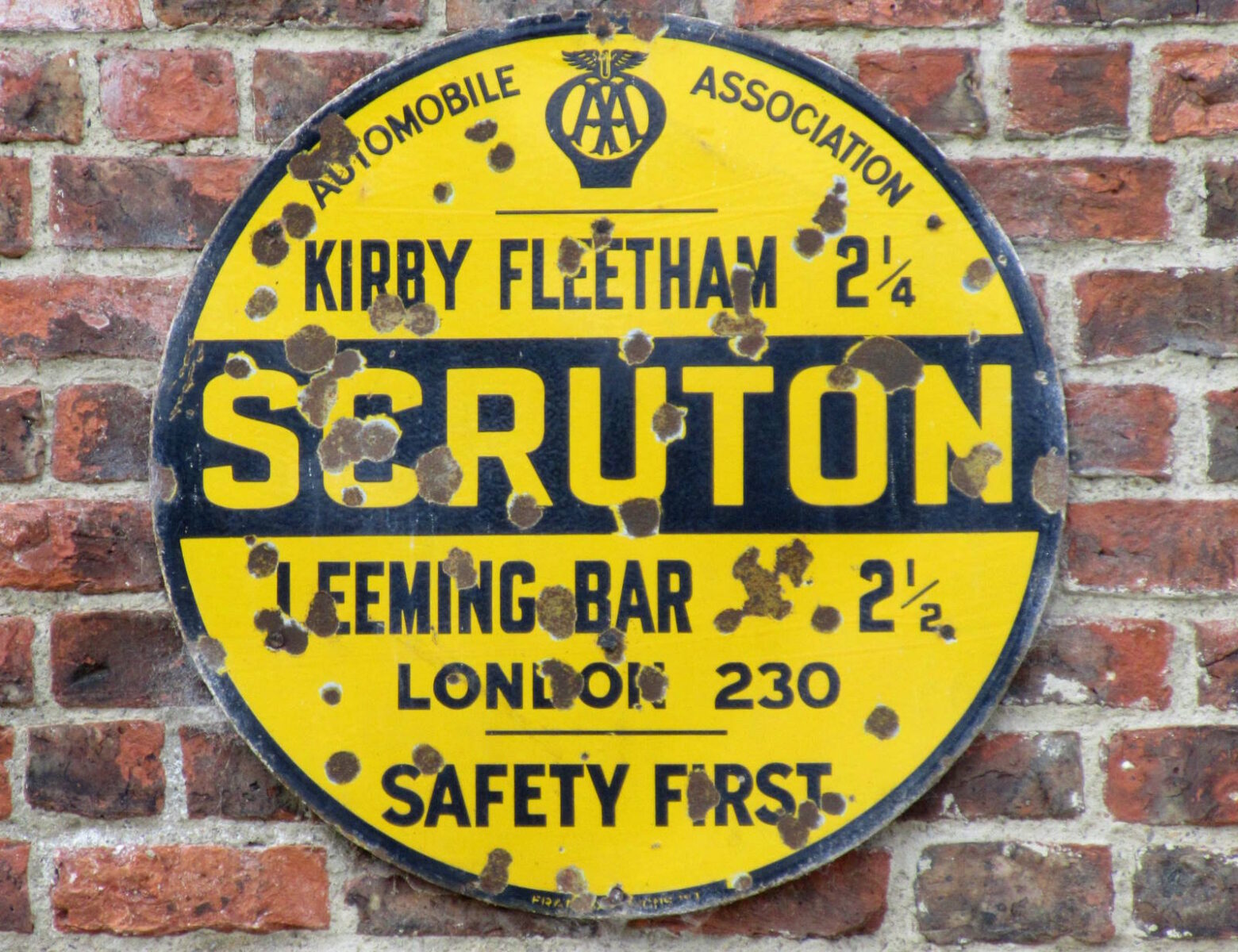
Some villages recall the 1910s through their absence of mobile signal. Scruton however can strongly evoke that long-lost decade more positively, thanks to its railway station. The Wensleydale Railway is a heritage line – one of England’s hundred-odd, passionately defended by volunteers – running from here to Bedale (and soon, Redmire again; and maybe, just maybe, one day, Hawes, or Kirkby Stephen…?).
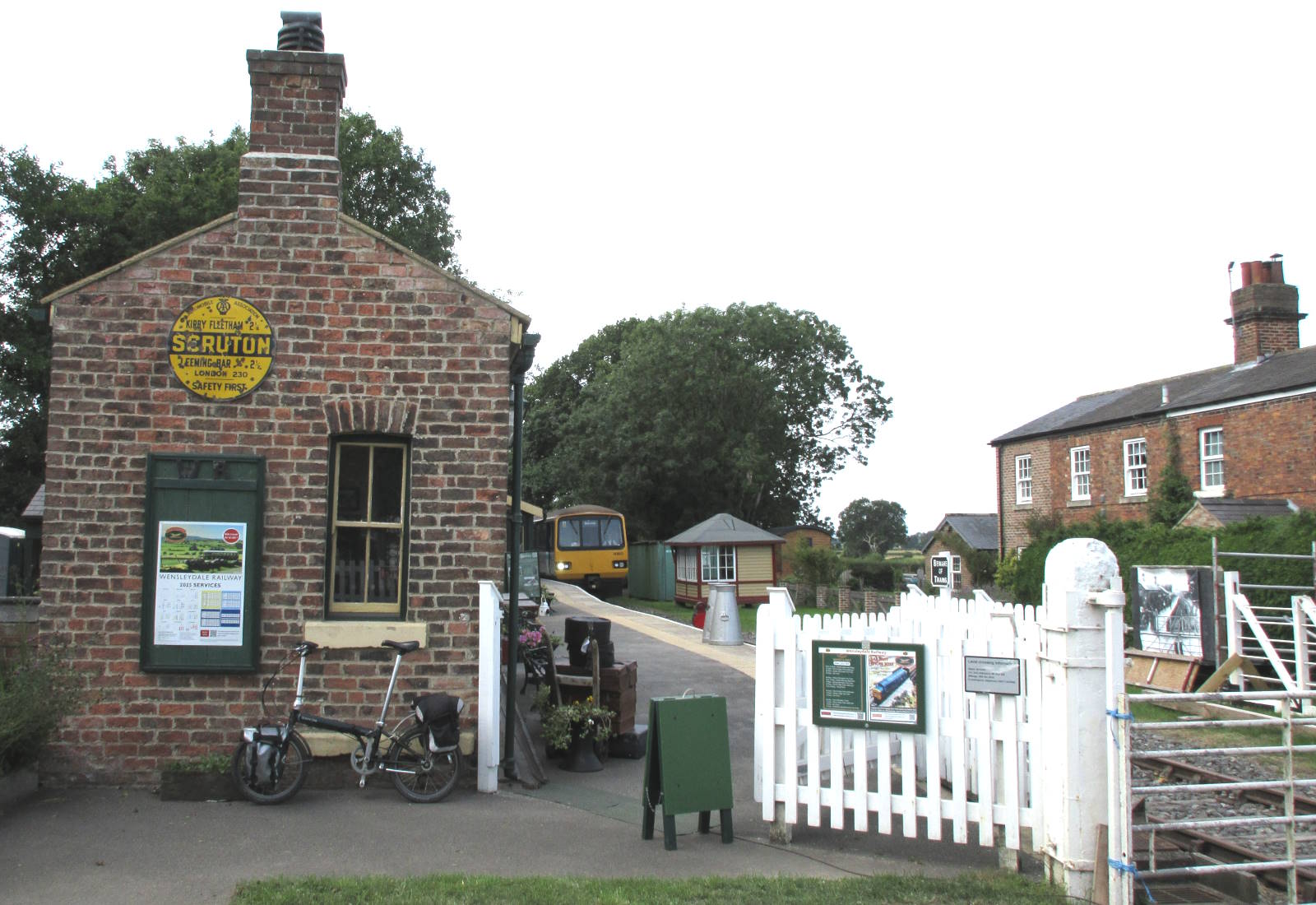
The line used to run all the way from Northallerton, across the northern Dales, to Kirkby Stephen via Hawes. However, declining numbers saw its passenger services stopped in 1954, even before the notorious Dr Beeching could get his sweaty hands on the crossing-out pen.
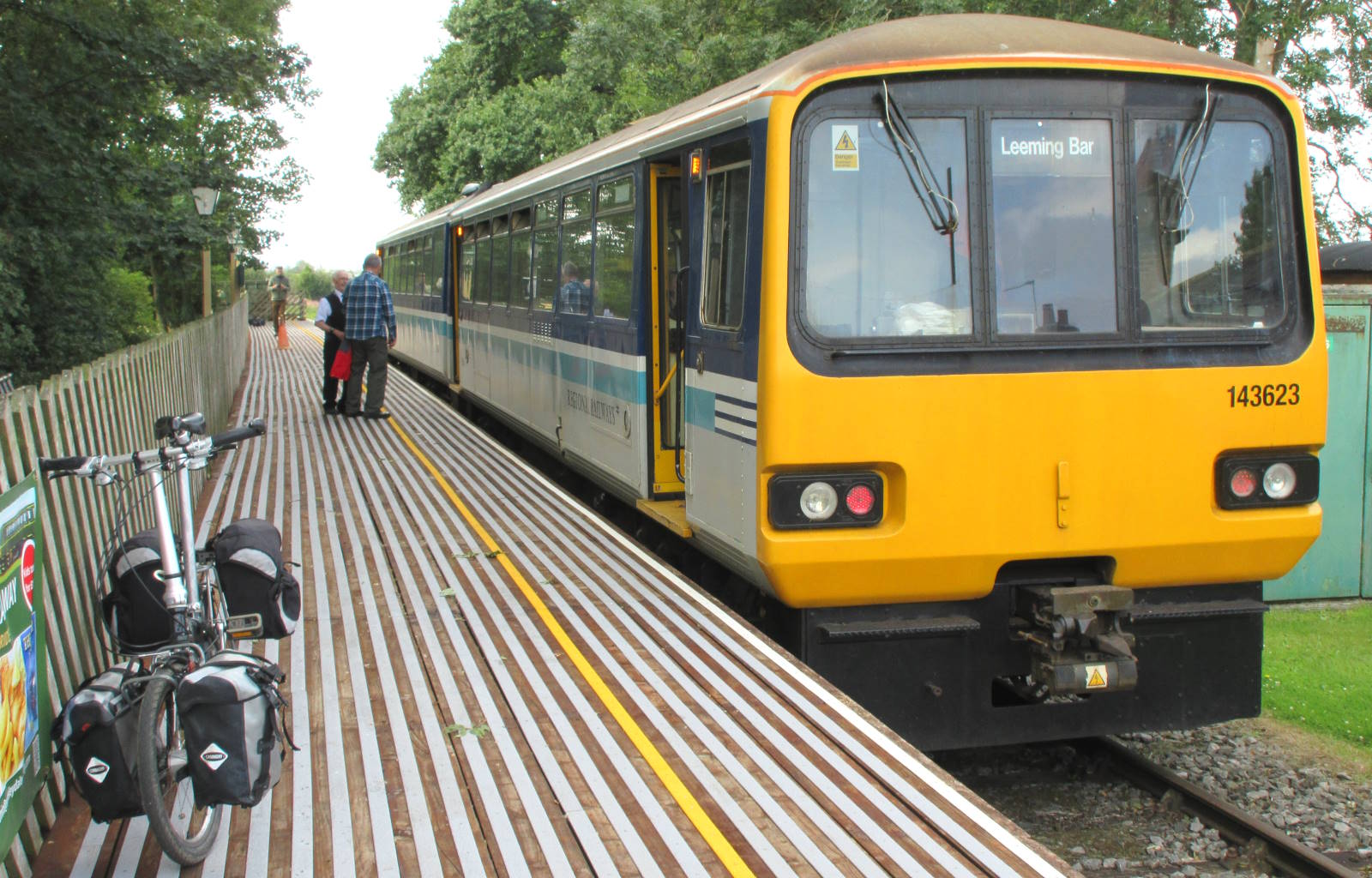
The line west of Redmire was lifted and most bridges demolished in 1965. But, thanks to the sterling efforts of many people, trains have been running again on the eastern half, on an occasional schedule, since 2003. They do a range of events and specials, and riding the line is a super experience, as I found when I was here in 2023. (Some days of course no services run at all, like Northern Trains.)
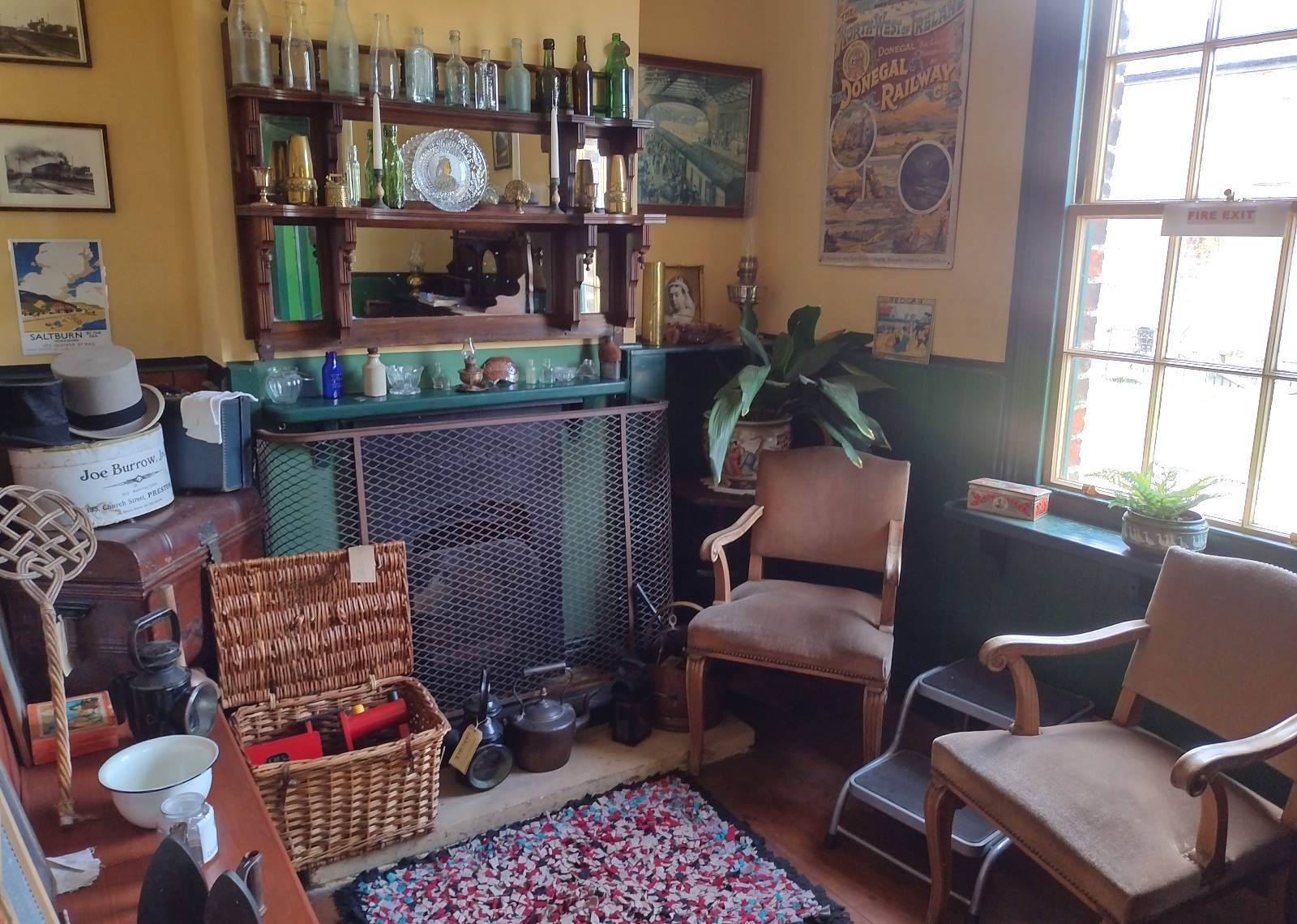
Thankful connections are vivid here. When the village’s boys went off to war it was from this station. And it was to this station that they returned, with no lives lost. It’s easy to relate to, because the waiting rooms and ticket office have been restored in authentic 1910s style.
A photo portrait of Queen Victoria gazes sternly over things. I was put in mind of Marie Lloyd’s music hall song Oh! Mr Porter, perhaps with updated lyrics (Oh! Mr Porter, what shall I do? / I want to go to Birmingham / And they’re taking me on to Crewe / Take me back to London, as quickly as you can / And meanwhile I’ll download the app and select one-click Delay Repay to claim compensation for my delayed journey due to points failure at Coventry).
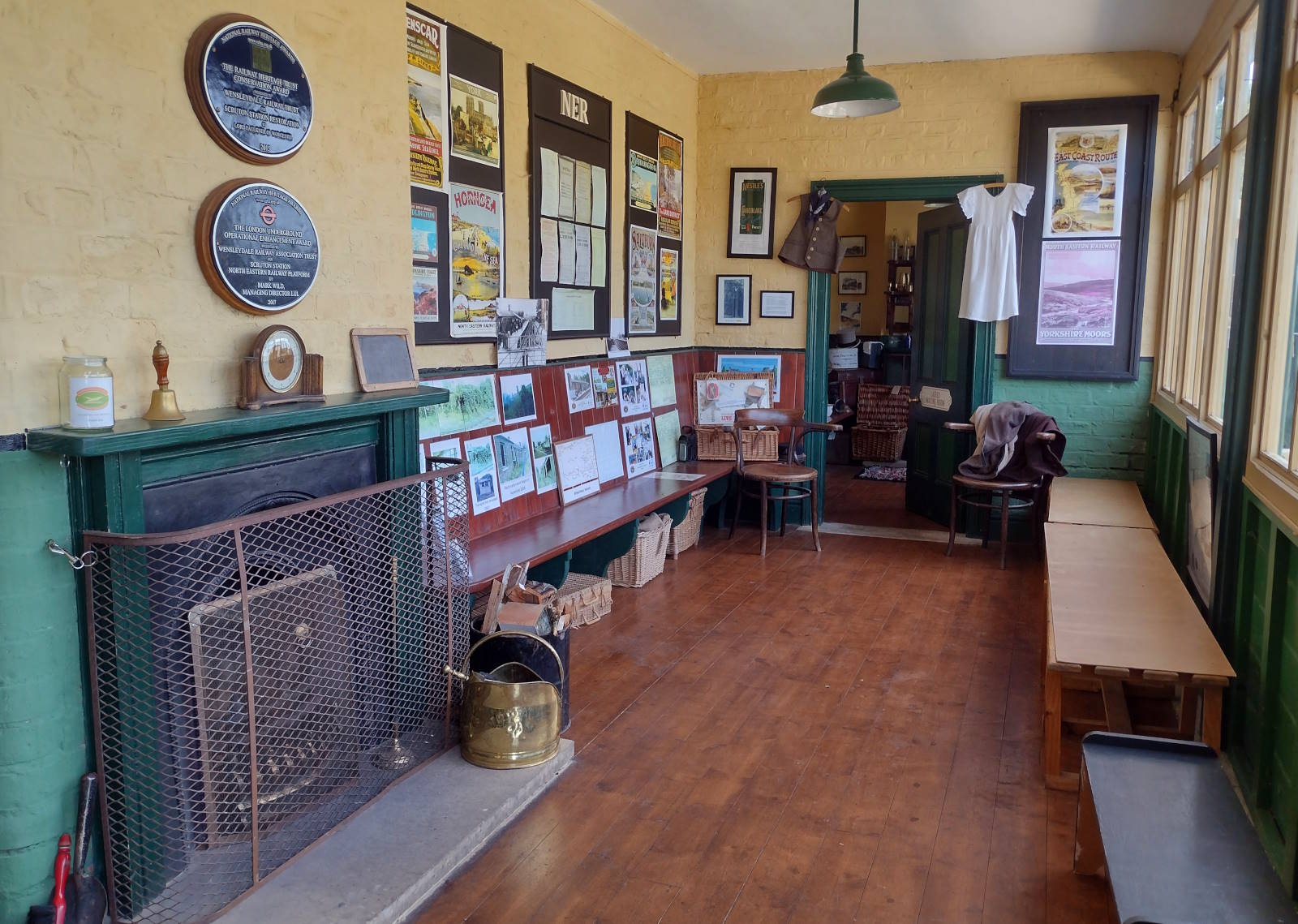
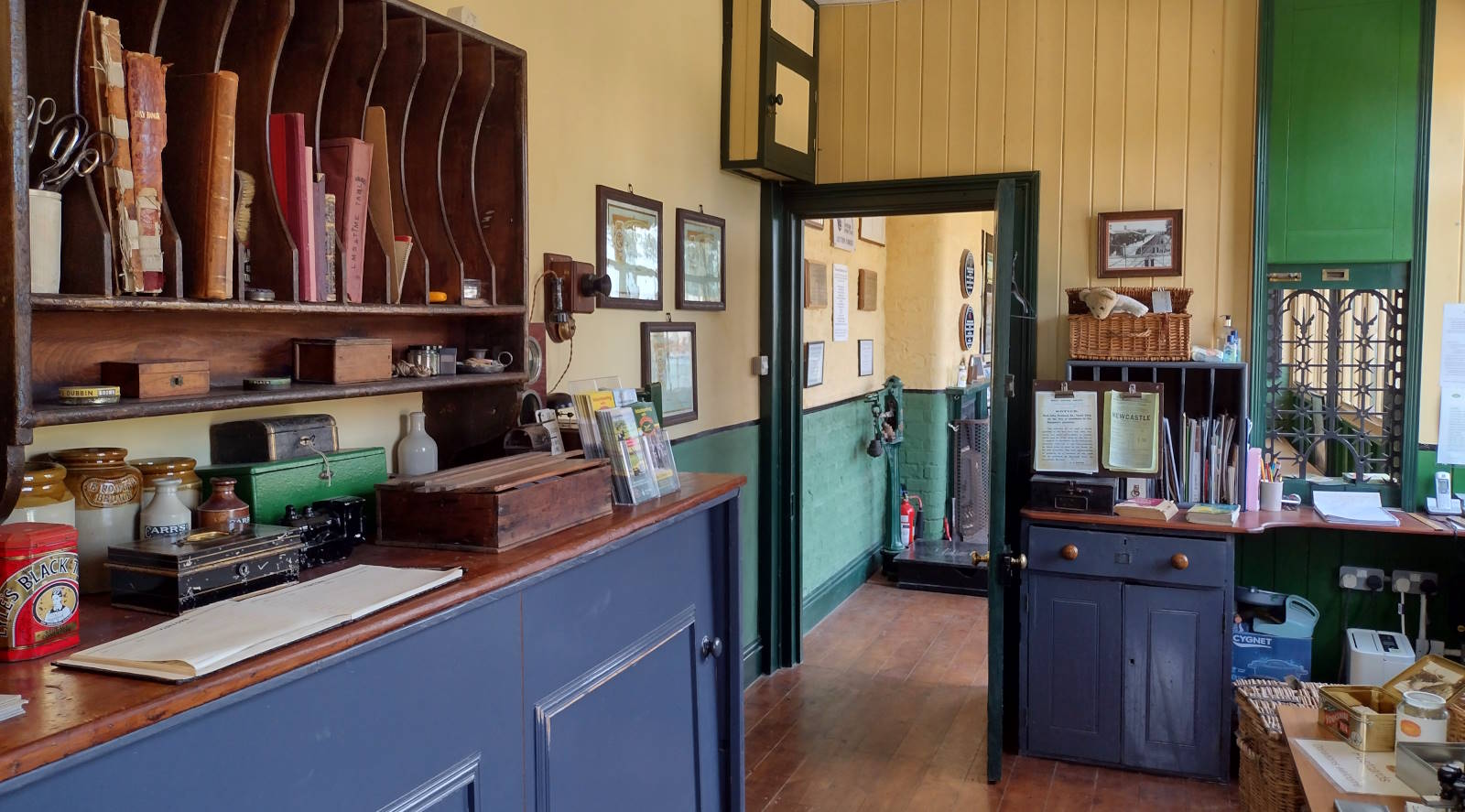
When the trains are running to Scruton, you can not only visit the waiting rooms – free – but also have friendly guides in period costume tell you what life was like for those thankful boys, their families and friends. They do educational days too, for kids and groups.
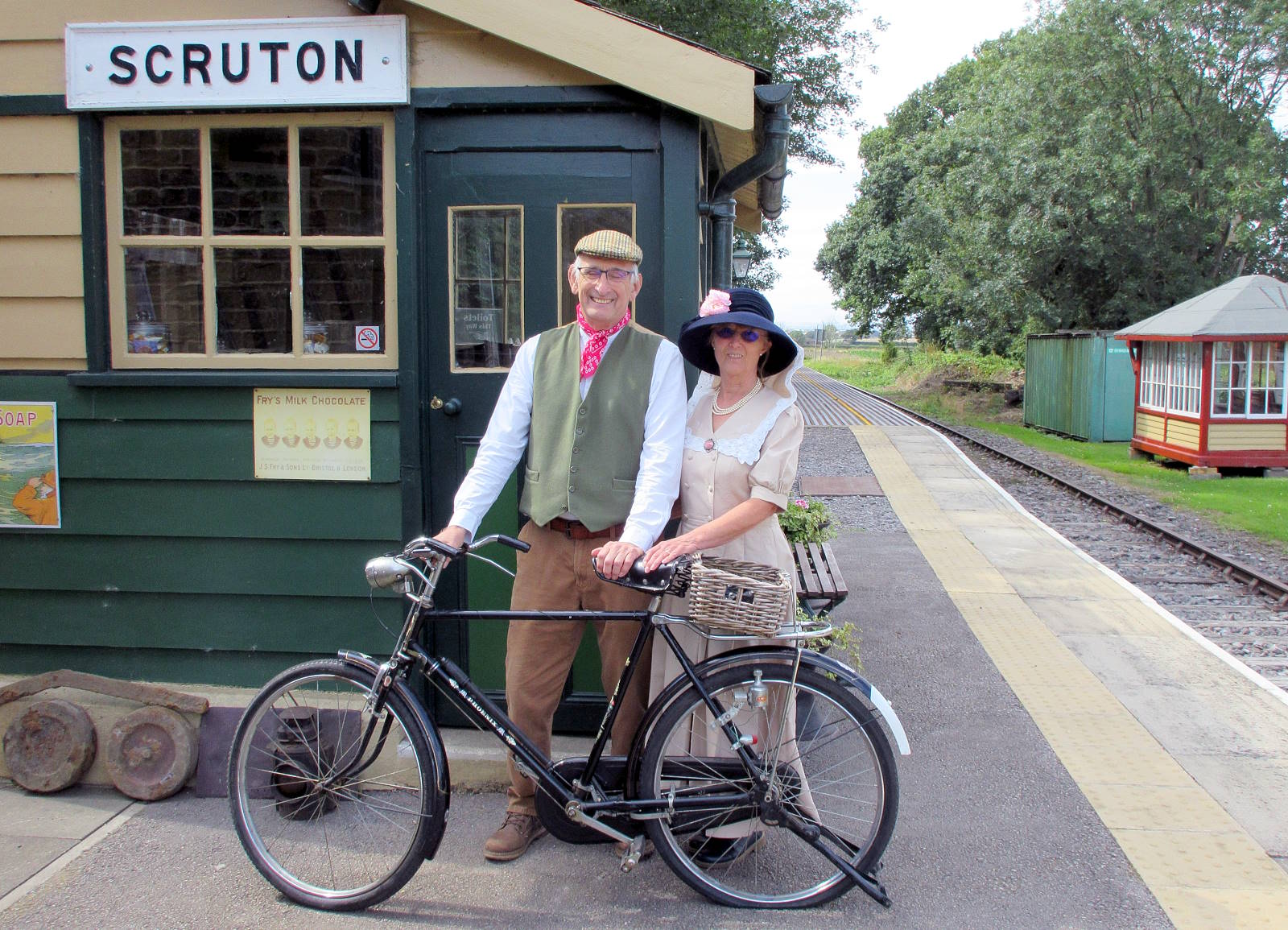
Grahame and Wendy were my guides today, and they were full of illuminating detail about those times. (They’re well equipped to deal with the level of a cycling blogger’s questions, both being retired primary school head teachers.)
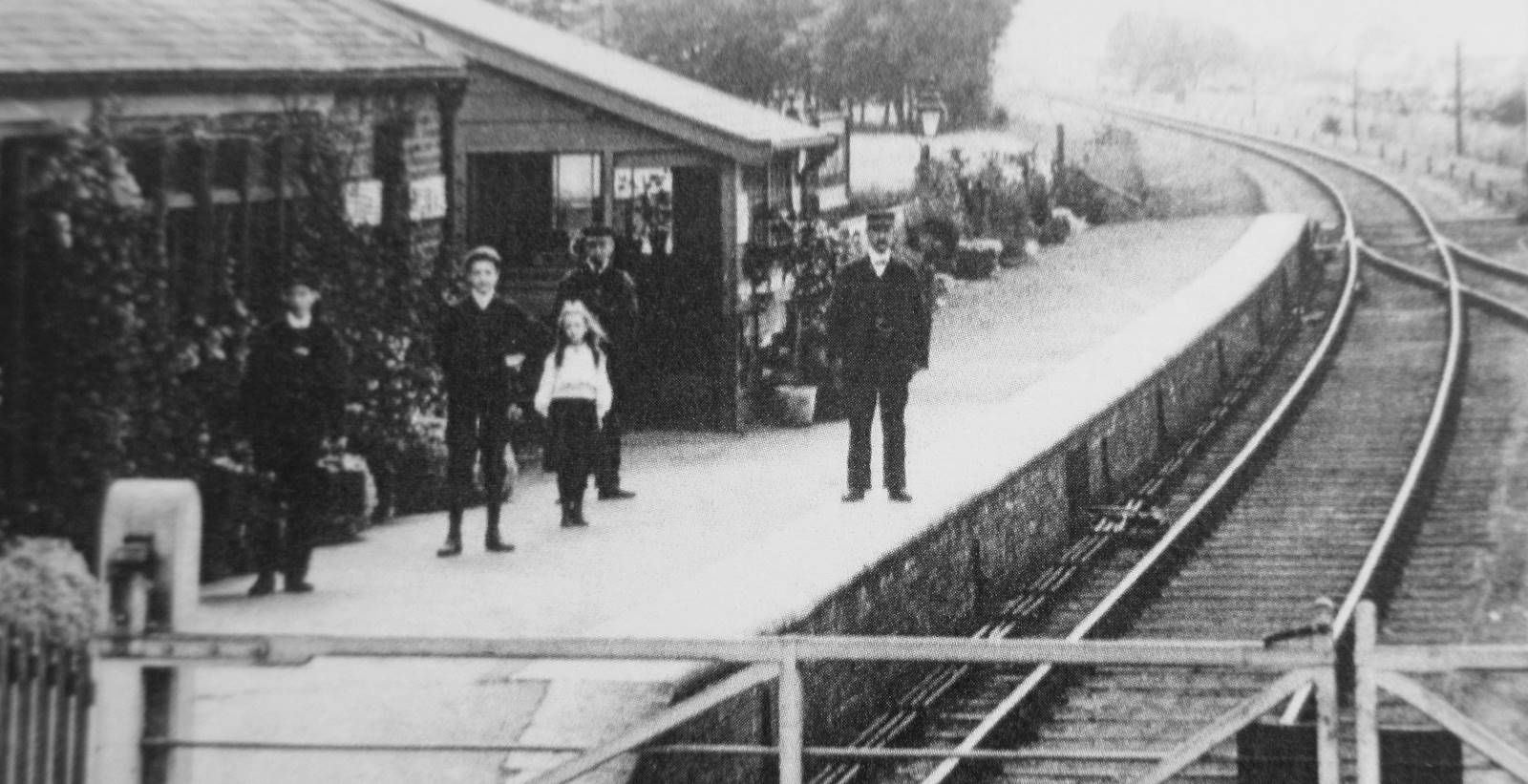
For instance, there’s a 1910s photo of the station in the waiting room. It shows the then stationmaster Francis Johnson and two of his sons, Aubrey (who worked on the railway too) and Percy (who worked in a bike shop in Northallerton – yay, a fellow cyclist!).
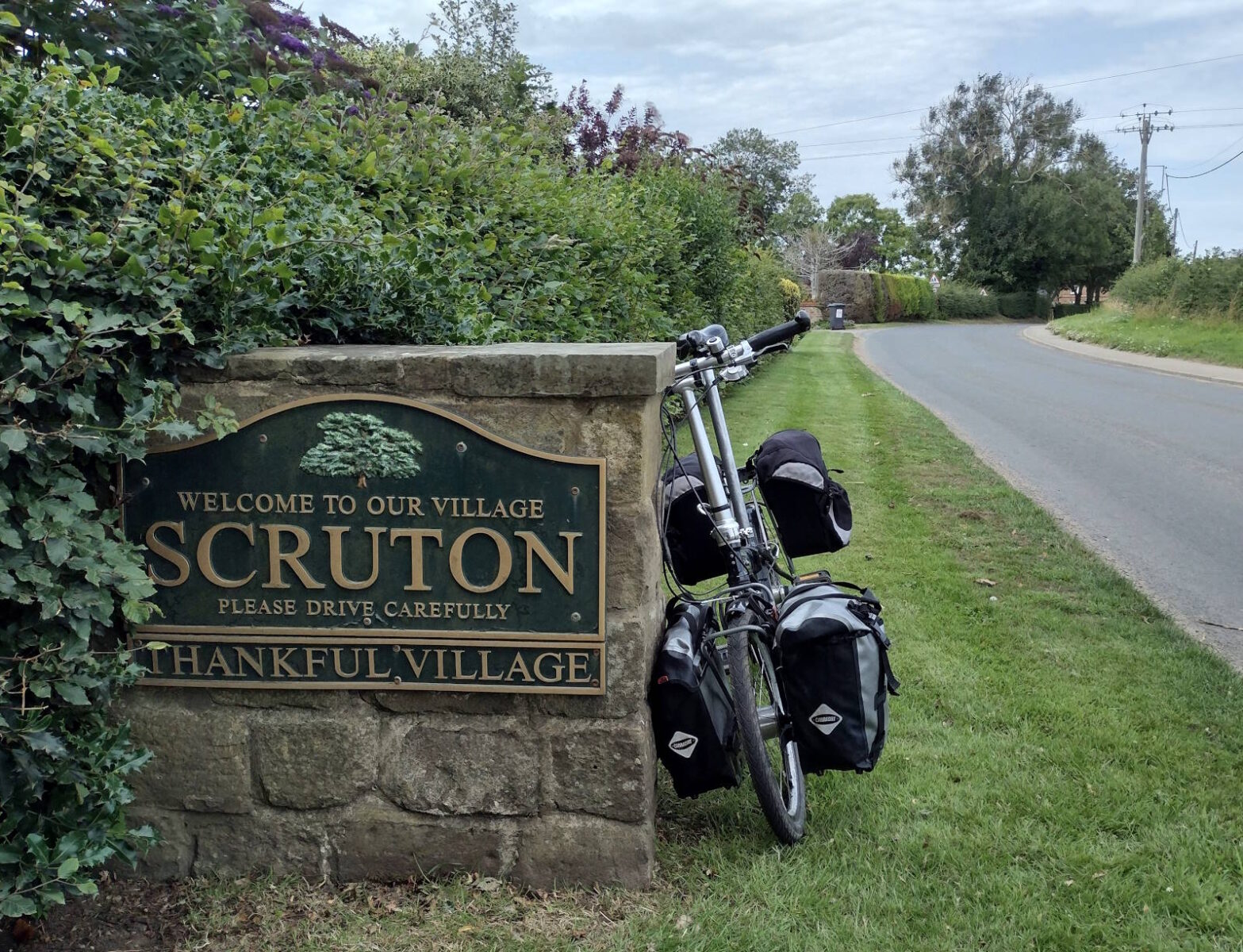
The village itself is a few hundred yards up the road. The welcome sign stresses its thankful status. Of all Yorkshire’s five, this is the one that celebrates it the most.
Thankfulness is a relatively recent thing: it seems villages back then didn’t shout about it for fear of upsetting their neighbours, many of whom lost an entire generation of young men. In WWI, recruitment policy kept villages and families together to boost morale. However, it often had the opposite effect. One shell could wipe out them all out, devastating an entire group of people. For WWII (War to End All Wars – the Sequel!) life wasn’t so community based, and recruitment was intentionally more mixed, so thankfulness wasn’t such a big deal.
YORKSHIRE’S THANKFUL VILLAGES
Catwick, near Beverley
Cundall, near Ripon
Helperthorpe, near Driffield
Norton-le-Clay, near Ripon
Scruton, near Richmond
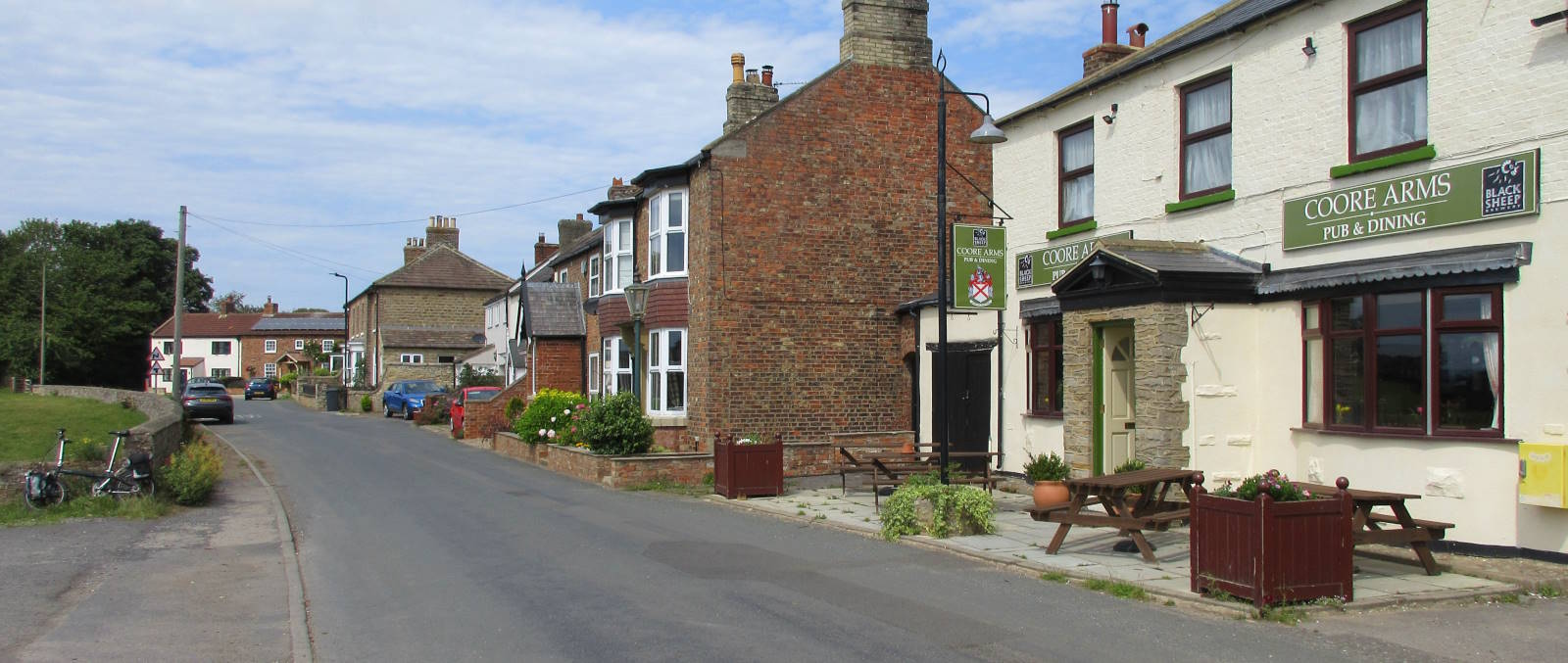
(1) I had a busy road to ride back to Northallerton best tackled sober, and
(2) There’s a Wetherspoon in Northallerton.
Scruton scores significantly over Yorkshire’s other thankfuls in having a pub. Like them, though, it has no shops. (That said, Spring House Farm Shop and Cafe on the main road isn’t far, and there’s a Co-op at neighbouring Leeming Bar.) Those requiring further refreshment can also find a pub in Kirkby Fleetham, nearby.
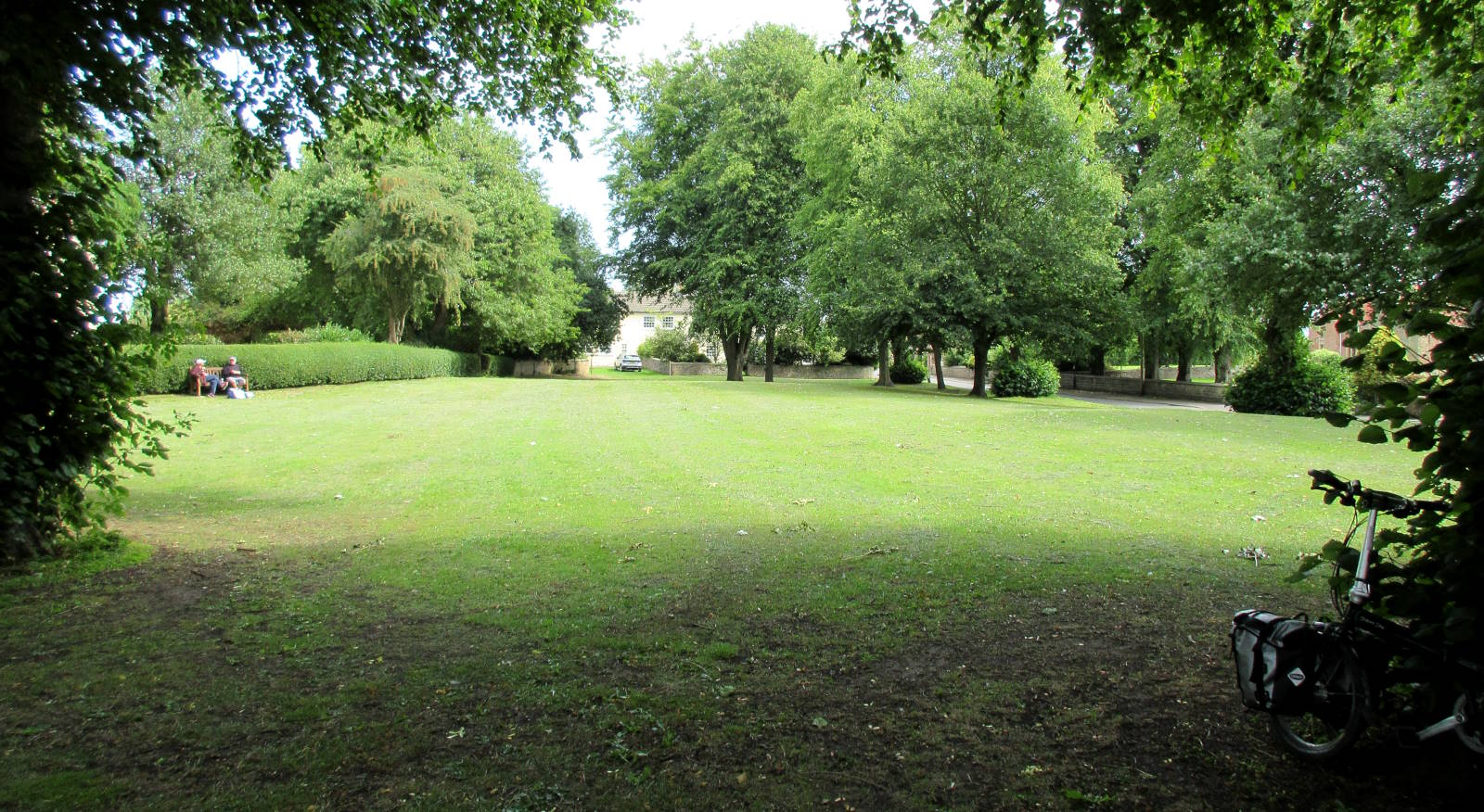
But Scruton also has a splendid, sprawling green, and a fine church. St Radegund’s is one of only five in Britain dedicated to the 6th century Frankish queen, and is a lot bigger than you’d expect for a village. The entrance has a thankful plaque dedicated to the boys who survived.
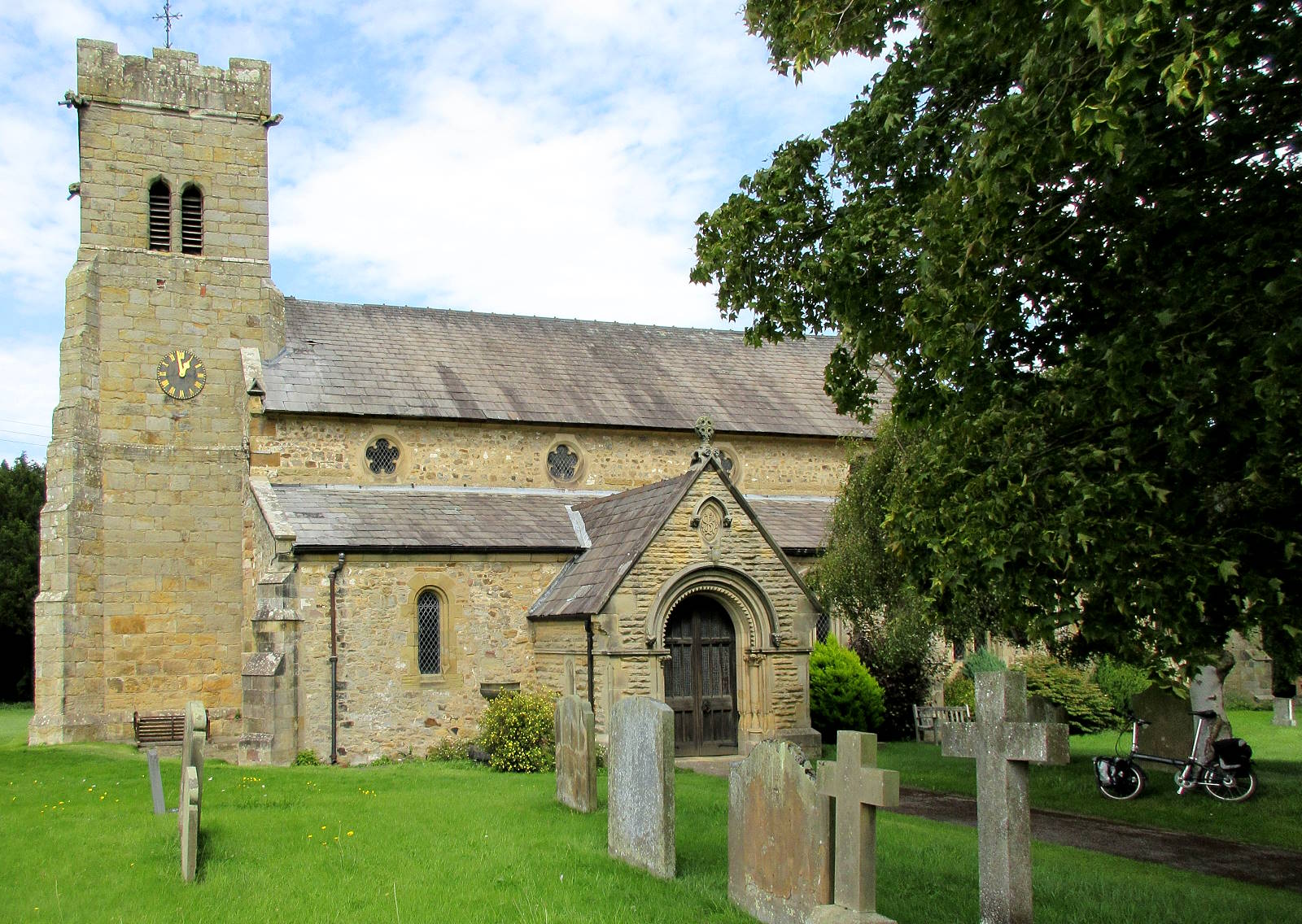
The survivors were: Simpson Bellwood; George Fawcett; Thomas Firby; Miles Procter; Harry Robinson; Thomas Stead; Harry Waterson; four Kemps, Arthur, Fred, Herbert and John; and those two Johnsons, trainspotter Aubrey and cycling fan Percy.
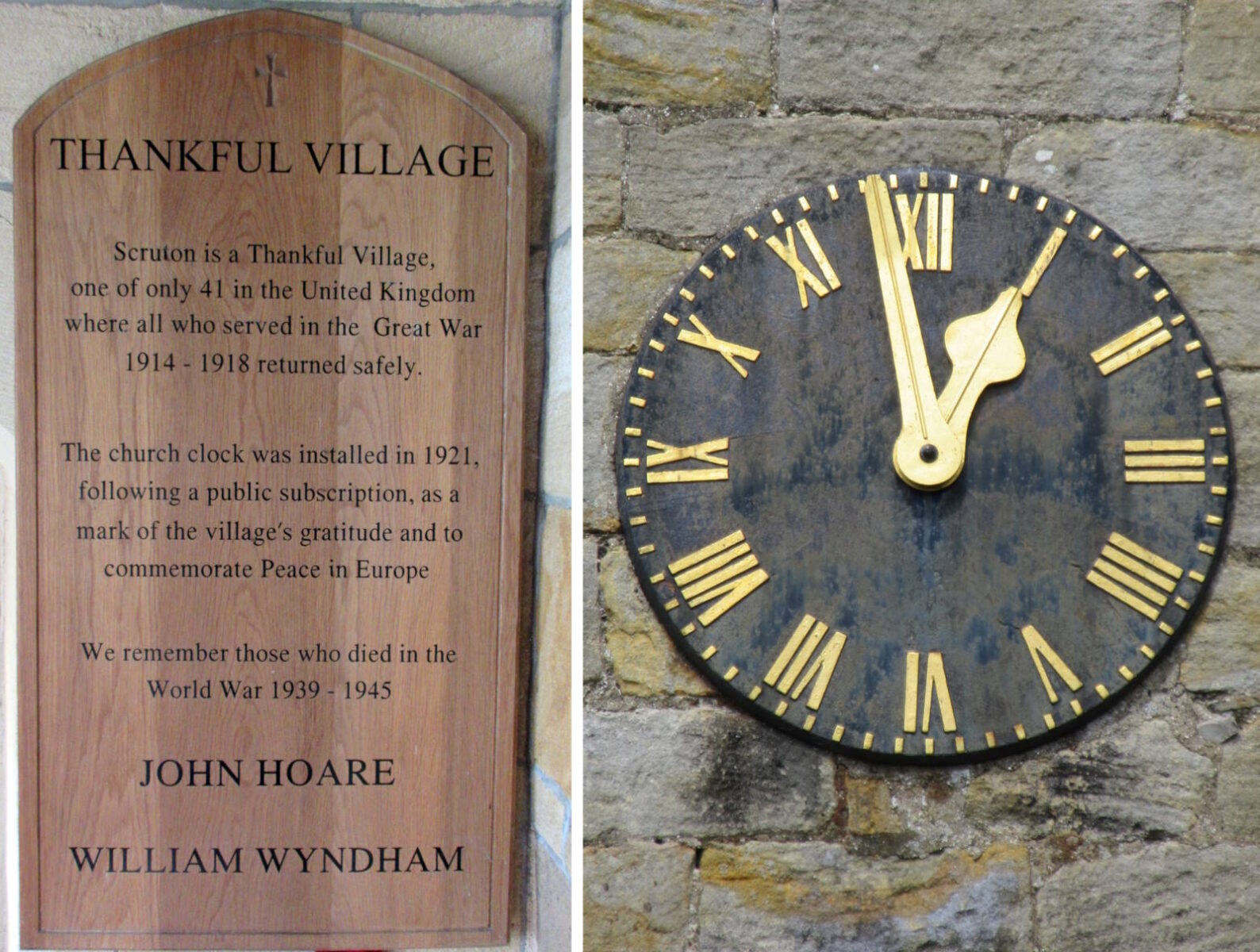
The church’s clock was commissioned to celebrate the boys’ homecoming as a peace memorial. It was installed in 1921, and was telling the right time today bang on.
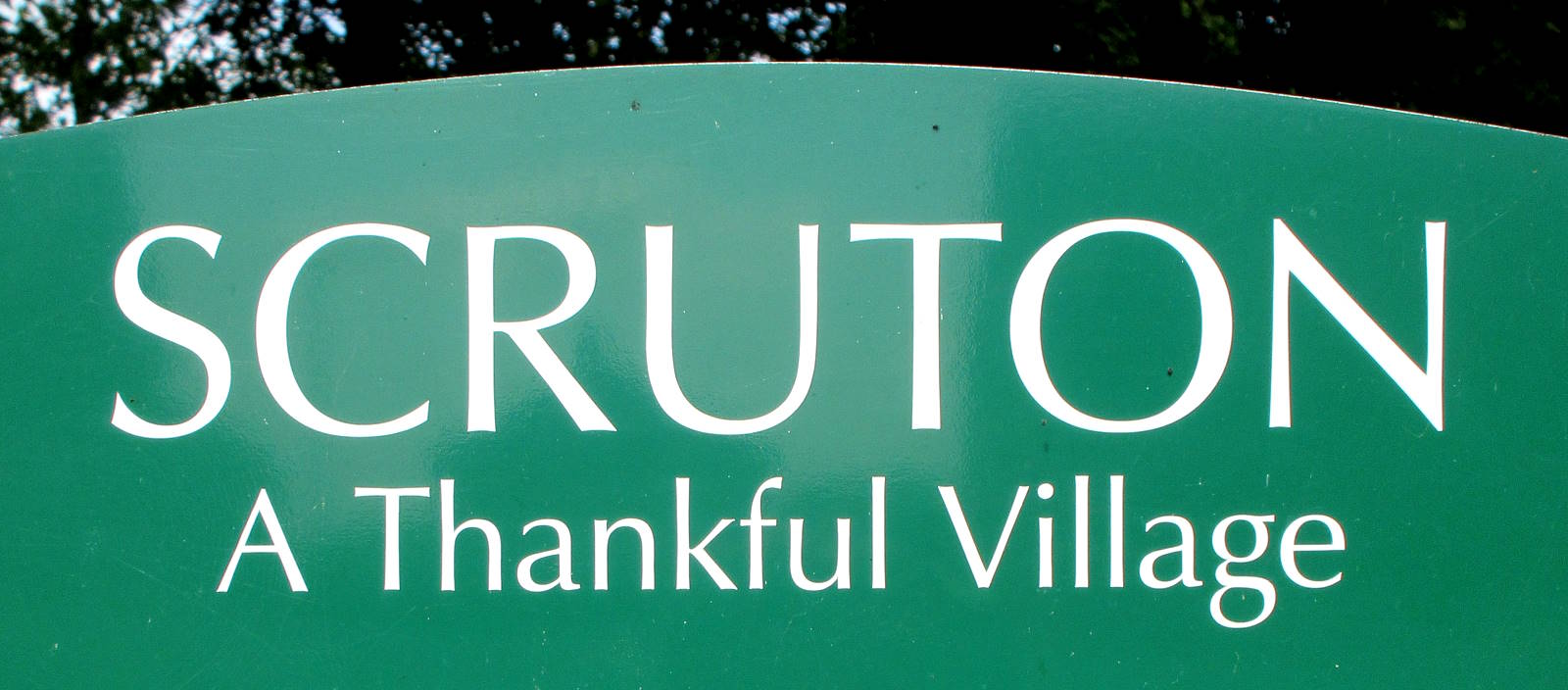
Aha: just time for me to cycle to Northallerton and squeeze in a drink before my train home.
We have a lot to be thankful for, not least Wensleydale Railways and their dedicated volunteers. Cheers!
